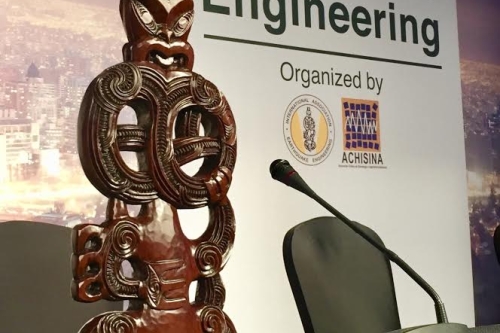Professor Stephen Mahin kicked off the 16th World Conference on Earthquake Engineering on January 9, 2017 with the opening keynote address, "Resilience by Design: A Structural Engineers Perspective."
The conference, which brings together leading global experts from all fields of earthquake engineering, was held in Santiago Chile. This year more than 3000 people attended.
Mahin discussed the rapid transformation occurring in the field of earthquake engineering and how technology, architecture, economics and public policy are transforming the practice of earthquake engineering and providing a strong imperious to accelerate research to better protect society from the risks posed by earthquakes and other natural hazards.
He emphasized the need to identify and retrofit existing inventories of seismically deficient structures that pose a substantial threat to human life, to develop low cost, but tough structures to increase safety in the developing world, and in particular, to devise and validate new generations of structural systems that are able to sustain very large earthquakes with low damage.
Such safe and resilient structures will result from a judicious application of new materials, new structural system concepts, and various protective systems such as those utilizing supplemental viscous or hysteretic dampers, seismic isolation devices, rocking and self-centering systems. The resulting resilient structures, infrastructure networks and communities will require the collaborative efforts of experts from many disciplines across civil engineering, architecture, urban planning, public policy, risk management and so on.

